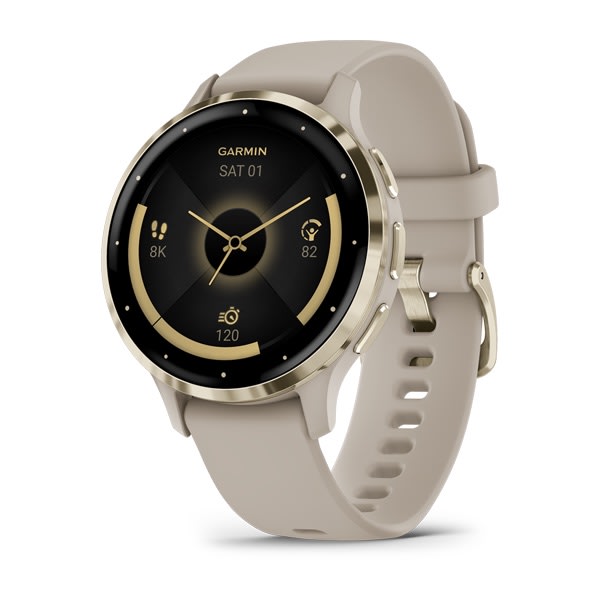
Why Your Body Battery™ May Struggle to Charge When You Start to Get Sick
You’ve probably heard or read stories about Garmin watches and similar wearables seemingly predicting illness. Can your fitness tracker really tell when you are getting sick? Or are wearable enthusiasts reading too much into the data?
Let’s start with the critical caveat. Garmin watches are not approved medical devices and are not designed to diagnose or treat any disease or condition. Always seek professional advice if you are concerned about your health.
Your body has a certain amount of resources at its disposal to do work, like exercising, planning a project or cooking dinner. These resources are like the energy in a rechargeable battery, and that battery is unique to you. Any kind of stress, physical or mental, drains your battery, while recovery, like sleeping, recharges it.

Garmin’s Body Battery™ uses Firstbeat analytics to measure stress and recovery to tell you how your personal battery is doing, but how does this work in practice? Your body’s complex nervous system has a particular area called the autonomic nervous system (ANS). The ANS, as the name implies, runs certain bodily functions automatically, like digestion, heart rate and normal breathing. [1]
The ANS is where stress and recovery are controlled through to sub-systems, the sympathetic and parasympathetic. The sympathetic nervous system is the source of our instinctual “fight or flight” response to stress. This is our body preparing to work. The parasympathetic nervous system, on the other hand, steers our “rest and digest” functions. [1]
What your heart can tell you
Your heartbeat is closely regulated by your ANS, determining both heart rate and heart rate variability (HRV). HRV is the variation of time intervals between heartbeats. The difference is in milliseconds, so we typically don’t notice changes in HRV like we do with heart rate (beats per minute).
This means that analyzing how your heart beats from one moment to the next can reveal transitions between fight-or-flight and rest-and-digest states. When you are under stress, your heart rate goes up, and your heart rate variability goes down. We may notice the former, but it is the latter that reveals the most about your current state.
Stress, like exercise, raises heart rate and lowers HRV. When you are relaxed and resting, your heart rate goes down while HRV goes up. Think of it this way: your heart is a finely tuned engine that revs only as much as it really needs, and that tuning is so good that it can change revs from one second to the next.
Now, let’s look at this in terms of who’s in control. Low HRV indicates stress, and stress means your sympathetic system is running the show. High HRV indicates rest, and rest means your parasympathetic system is at the wheel. [2] Keep in mind that if your HRV raises too high from possible overtraining, your HRV is indicating that it is having a hard time recovering and maintaining balance.
When everything is in balance, your Body Battery shows a regular cycle of draining and charging over time. That cycle can get disrupted, causing, for example, faster draining during the day, or slow recharging during the night. One such disruption could be illness.

What happens when you are sick?
Illness kicks off an immune response, which is largely driven by hormones. These hormones tell the body to start producing more white blood cells, for example, and they also trigger the ANS to increase sympathetic activities. This is what drives heart rate, sweating, etc. as your body works to fight the illness. Physiologically, the body senses stress and sympathetic nerves take over. HRV usually starts to decrease slowly, though there are variations; more severe illness may have a bigger impact faster. [3]
Early on, it is difficult to say if a low battery is because of illness or something else. If you also have a slight headache, sore throat or unusual sneezing, for example, then you are likely getting sick. When you are getting sick, you may also see higher than normal heartrate and training load in your regular training sessions.
Note that fever is a major stressor on the body. A 1 °C increase in your temperature can raise your average heart rate by over 7 beats per minute. Physiological imbalances may also be displayed as higher stress levels. For example, unbalanced diabetes or hypo- or hyperthyroidism can be reflected in your stress charts [1] and lower body battery values.
Staying healthy
Your body’s stress response is about being prepared for challenges. It gives you the energy to work hard and focuses the mind. In the same way, straining your muscles and cardiovascular system improves your fitness, making you better prepared for the next physical challenge.
Facing down challenges drives us to adapt and grow stronger. Stress only becomes unhealthy if it continues for too long or is too high. [5] Excessive stress levels over time diminish our ability to bounce back from challenges and weaken our immune systems. [6]
A balanced exercise program and taking care of yourself by eating and sleeping well, taking breaks during the workday, socializing, and so forth, are key ingredients to good health. The Body Battery helps you build awareness of your overall health so you can make better, informed decisions to stay fit and happy.
Expert advisor:
Johanna Toivonen, Physiologist at Firstbeat Technologies; M.Sc. Biomechanics and Physiology (University of Jyväskylä).
References
| [1] | B. Derrickson, Human Physiology, Hoboken, NJ: John Wiley & Sons, Inc., 2017. |
| [2] | Firstbeat Technologies, Oy, “Stress and Recovery Analysis Method Based on 24-hour Heart Rate Variablity,” White Paper, Jyväskylä, Finland, 2014. |
| [3] | L. Borovikova, S. Ivanova, M. Zhang and e. al., “Vagus nerve stimulation attenuates the systemic inflammatory response to endotoxin,” Nature, vol. 405, p. 458–462, 2000. |
| [4] | J. . Karjalainen and M. . Viitasalo, “Fever and Cardiac Rhythm,” JAMA Internal Medicine, vol. 146, no. 6, pp. 1169-1171, 1986. |
| [5] | M. Agnese, “The effects of chronic stress on health: new insights into the molecular mechanisms of brain–body communication,” Future Science OA, vol. 1, no. 3, 2015. |
| [6] | J. Morey, I. A. Boggero, A. B. Scott and S. Segerstrom, “Current Directions in Stress and Human Immune Function,” Curr Opin Psychol, no. 5, pp. 13-17, 2015. |







